Team: Boston Bruins
Team Building Status: Contending
The summer of 2023 brought the end of an era for the Boston Bruins when Patrice Bergeron announced his retirement from the NHL. David Krejci also departed (again) and we were left wondering how the Bruins would cope after losing their top two centers. So far, they haven’t missed a beat as they lead the Atlantic Division down the stretch drive this season. Are they prolonging the inevitable or have they built a sustainable roster that can continue to contend?
Roster Ruminations
NHL Roster
The Bruins have endured the loss of their top two centers, including perennial Selke candidate Bergeron, without missing a beat this season. Their record speaks for itself for their current performance, however cracks are starting to show in their roster. Formerly a very strong 5v5 possession team, they’ve taken a step back in that regard this season. We see it again in the 2024-2025 Bruins profile from the model, with some underwhelming predicted 5v5 possession stats showing. Strong goaltending has helped mask that regression and is expected to again next season.
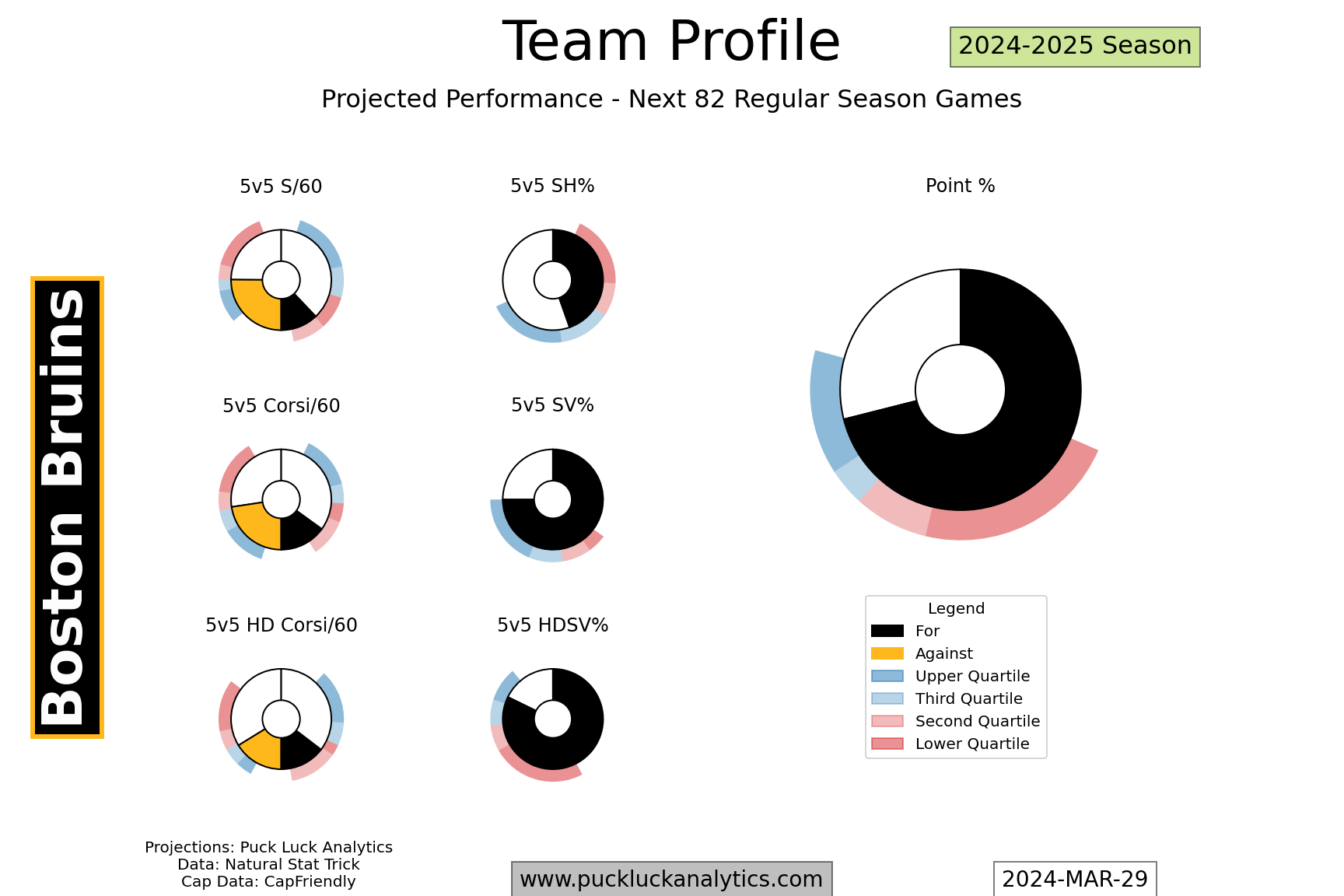
Salary Cap Management
The Bruins have left their cap sheet in a place where they have some flexibility as they try to navigate the post-Bergeron era. David Pastrnak, Charlie McAvoy and Hampus Lindholm are signed for the long haul, but they haven’t committed to a larger core group yet. They have plenty of short term flexibility as well, as Jeremy Swayman is their only notable pending RFA and a group of departing UFAs leaves them at only about 75% cap committed next season.
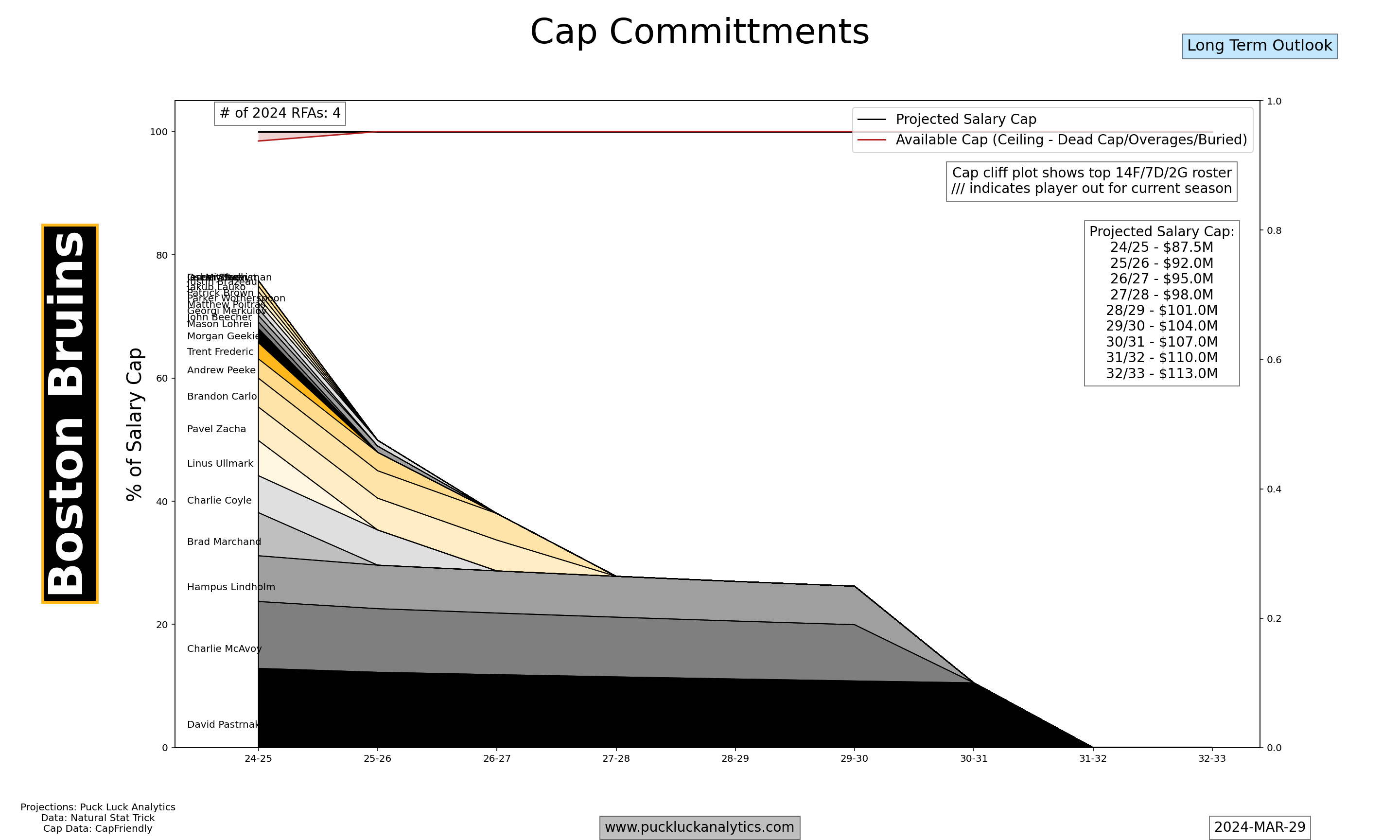
Future Assets
The Bruins long contention run has left their futures cupboard bare. Hockey Prospecting ranks the Bruins dead last in the NHL for their prospect pool and their pick profile is well below baseline. The Bruins don’t have a pick until the 4th round in 2024.
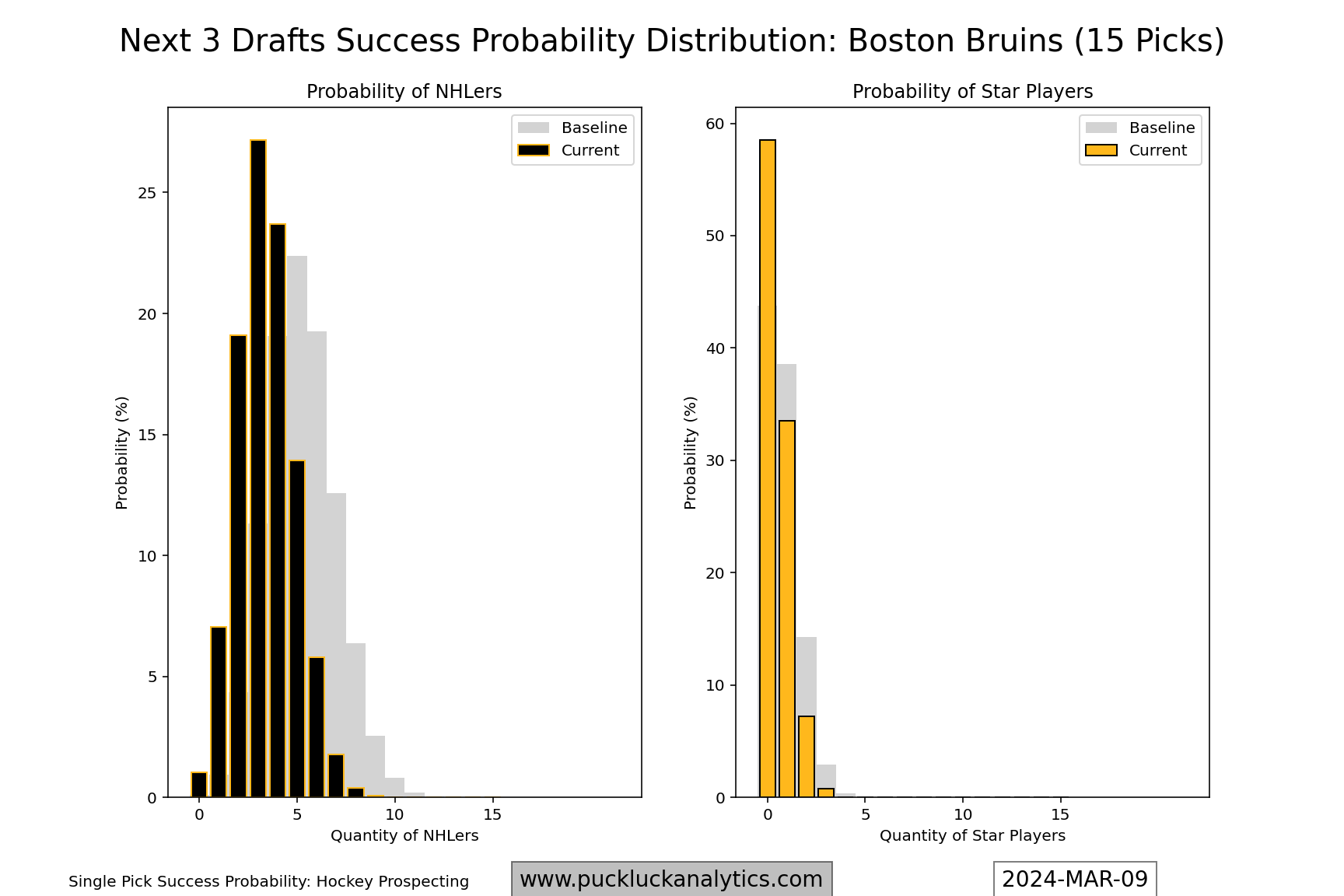
What’s Next?
Breaking the Bruins current roster into 4 year age cohorts shows us two waves of players going through their system. Brad Marchand is the last remnant from the Bruins 2011 Stanley Cup and is the face of the veteran group. David Pastrnak and Charlie McAvoy lead a group in their early prime that are taking over as drivers of the team.
| Centers | Wingers | Defensemen | Goalies |
| Charlie Coyle | Brad Marchand | Kevin Shattenkirk | |
| James van Reimsdyk | Derek Forbort | ||
| Centers | Wingers | Defensemen | Goalies |
| Danton Heinen | Hampus Lindholm | Linus Ullmark | |
| Brandon Carlo | |||
| Matt Grzelcyk |
| Centers | Wingers | Defensemen | Goalies |
| Pavel Zacha | David Pastrnak | Charlie McAvoy | Jeremy Swayman |
| Morgan Geekie | Jake DeBrusk | Andrew Peeke | |
| Jesper Boqvist | Trent Frederic |
| Centers | Wingers | Defensemen | Goalies |
| Matthew Poitras | Mason Lohrei | ||
| John Beecher | |||
The early prime cohort is the new face of the Bruins. David Pastrnak is one of the best goal scoring wingers in the NHL and Charlie McAvoy is among the top defensemen. There are plenty of bodies in the group, but not a lot of stars. As the Bruins become more reliant on this group to drive their success, they’ll need some additional players that can fill roles in the top half of the lineup.
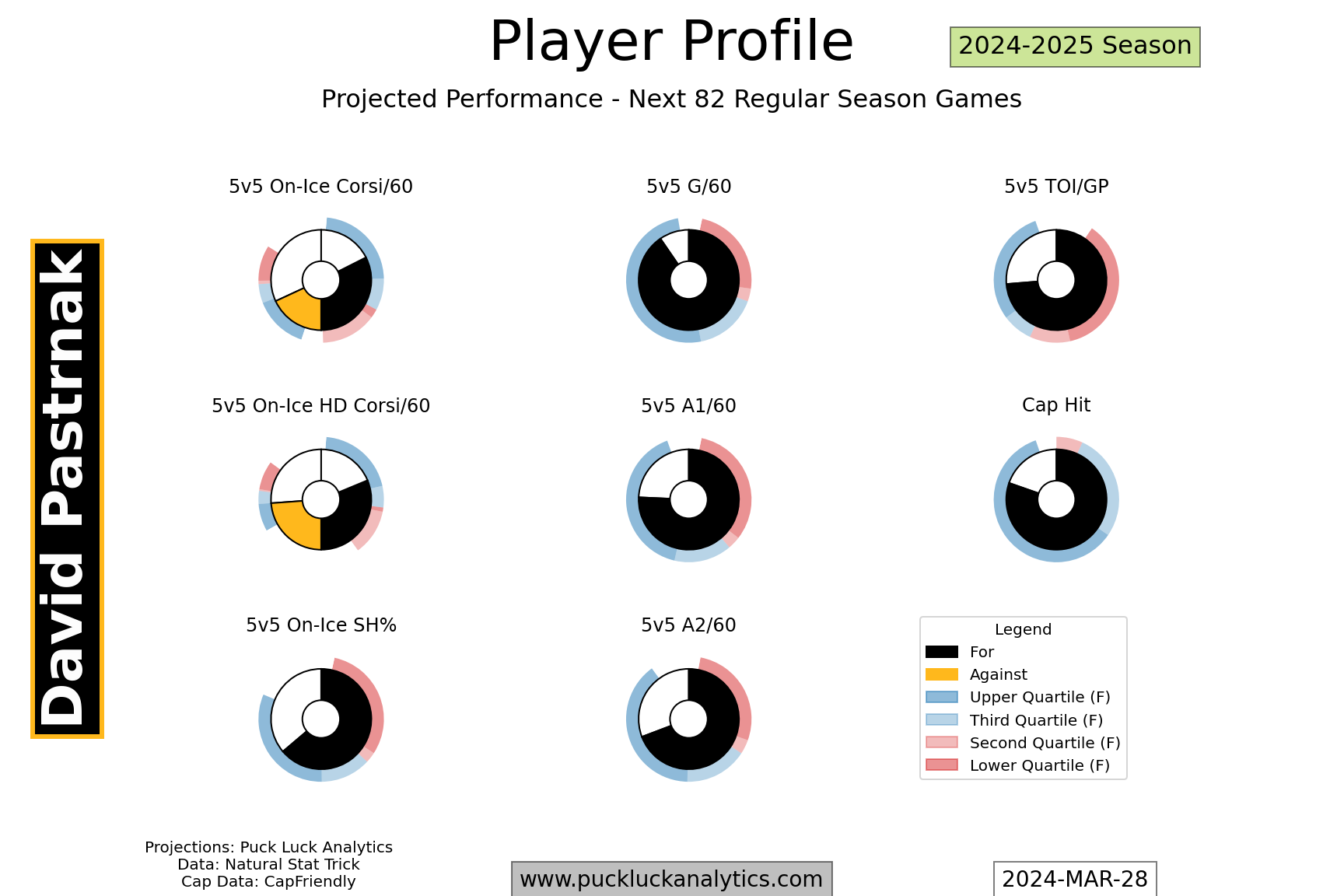
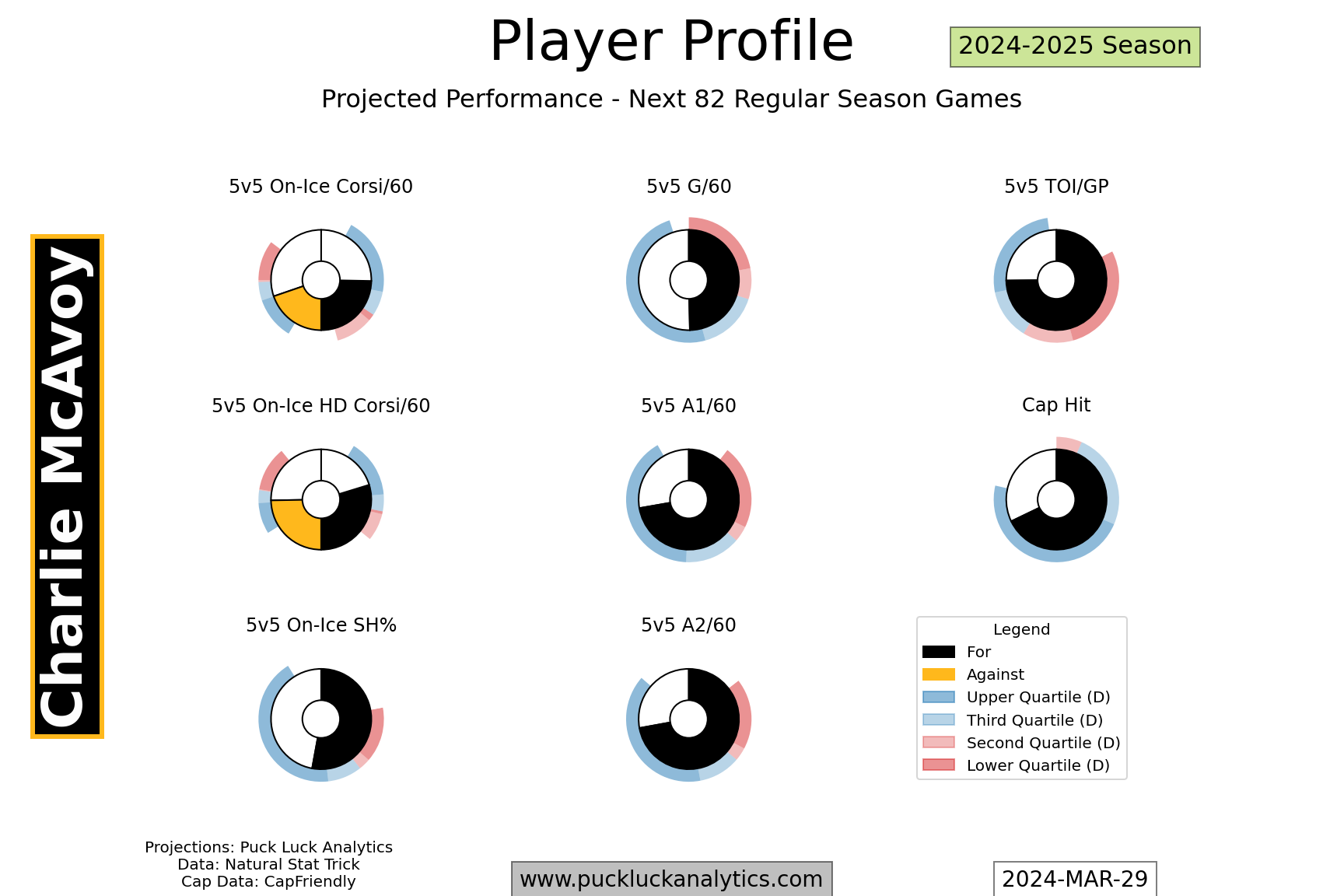
The developing cohort behind the Pastrnak/McAvoy group is very thin. There are a couple of players breaking into the NHL that may provide some help to the early prime cohort, but the Bruins shouldn’t expect a lot out of this group as it’s currently constructed. That’s not necessarily a bad thing if we consider using alternating cohorts to drive a sustainably competitive roster. What’s more concerning is the lack of a future cohort forming behind the developing one.


The late prime and veteran cohorts are currently supporting the early prime cohort to be competitive. It’s not going to last though, as the Bruins have a large group of players now on the downhill side of typical age curves. If the Bruins want to attempt to build a future cohort and avoid a deep rebuild, they’ll need to turn over this part of the roster and obtain some assets in the process. Targeting specific needs to bolster the early prime cohort and picks and prospects under 20 should be their priority in any trade returns. Brad Marchand is 35. He might also be the kind of player a contender is willing to pony up a large trade package for.
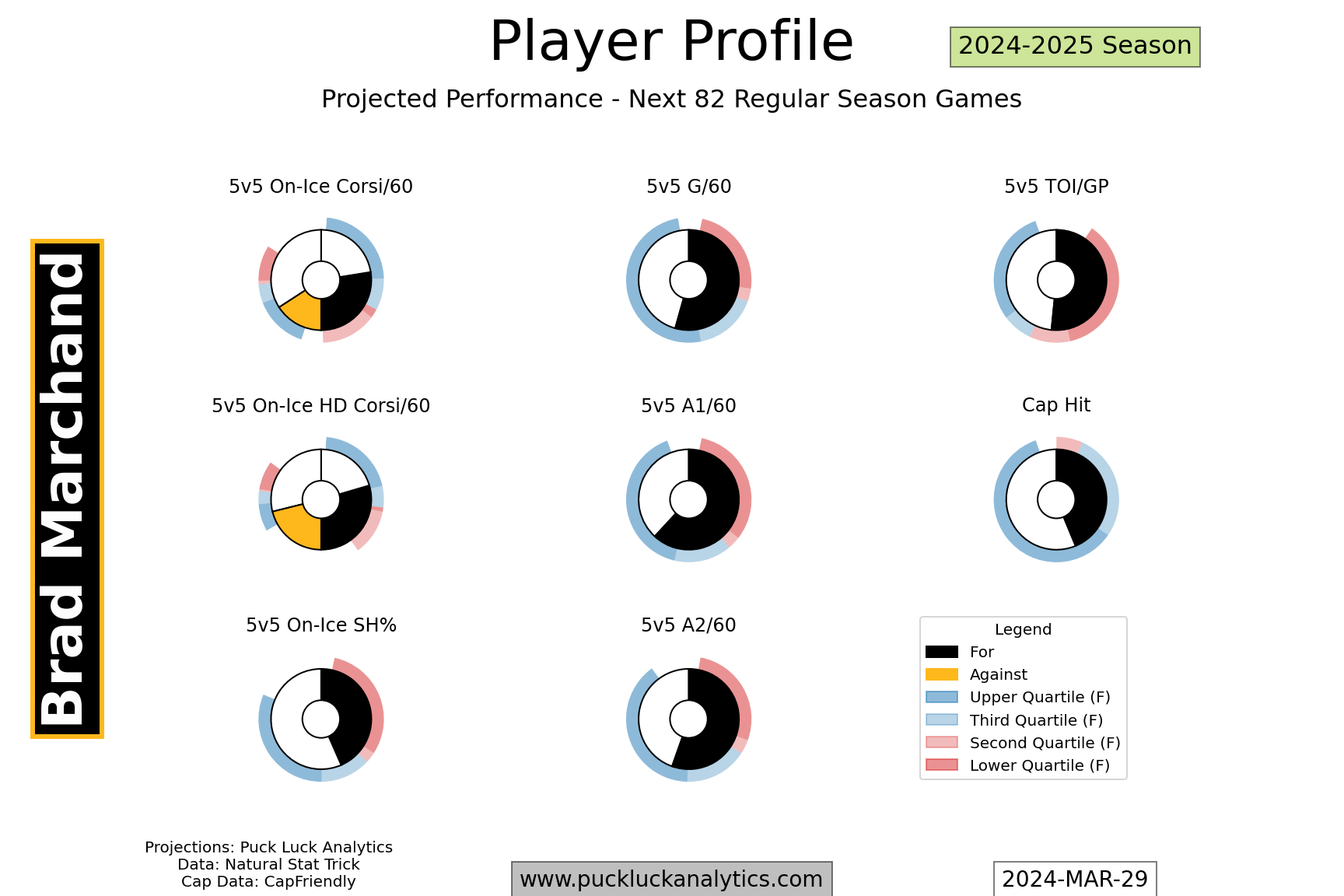
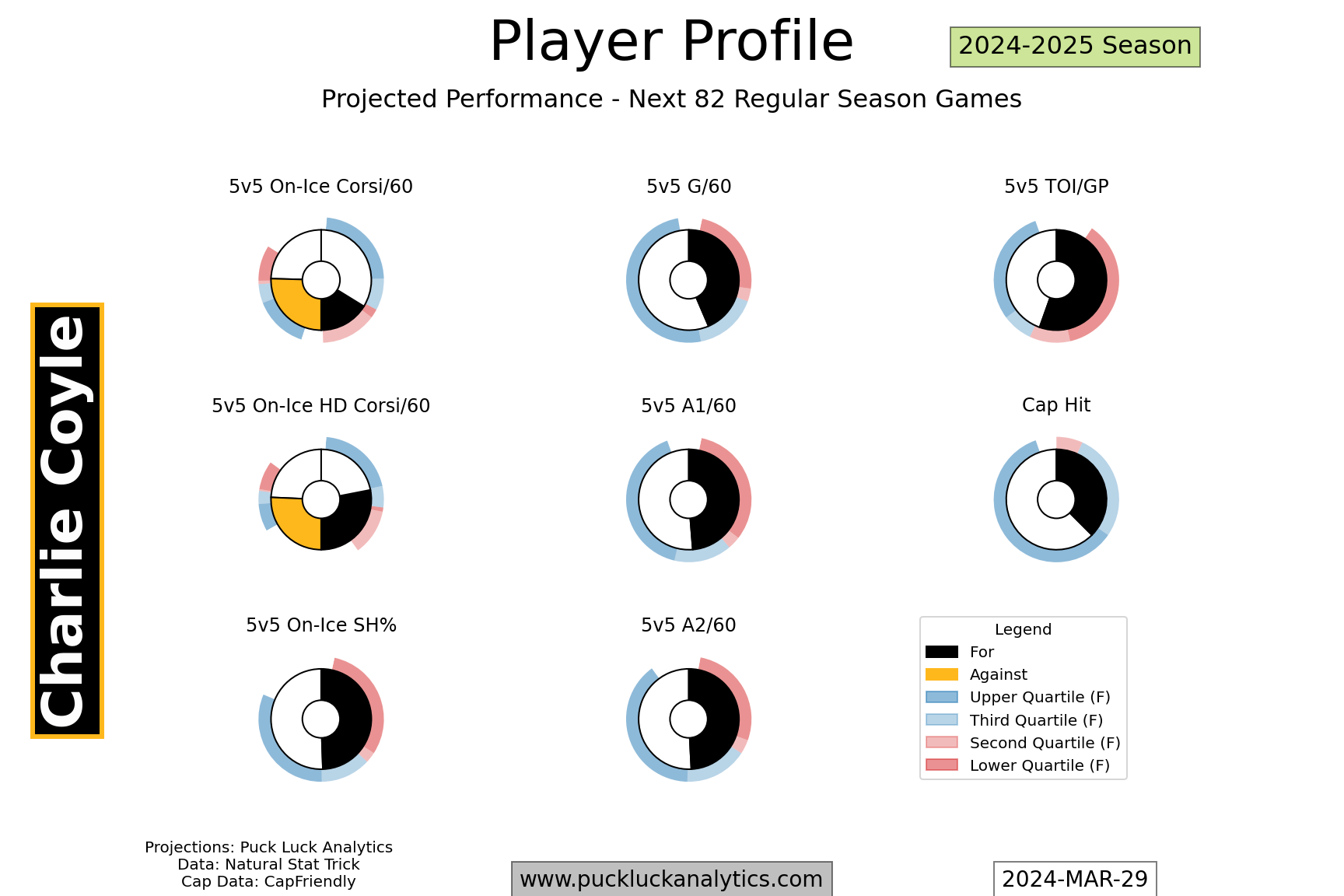
The Bruins are staring a prolonged decline in the face that could easily end up with a deep rebuild when the older cohorts are no longer able to adequately support the Pastrnak/McAvoy cohort. They may be able to avoid it, but it will require some difficult decisions and roster turnover in the next few years.



